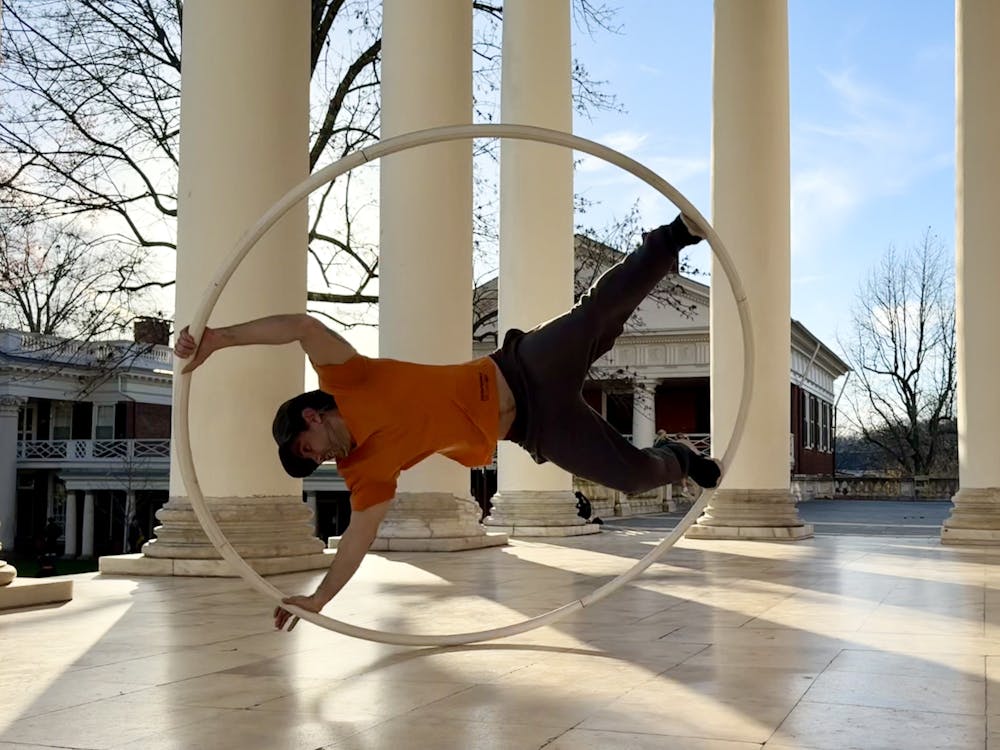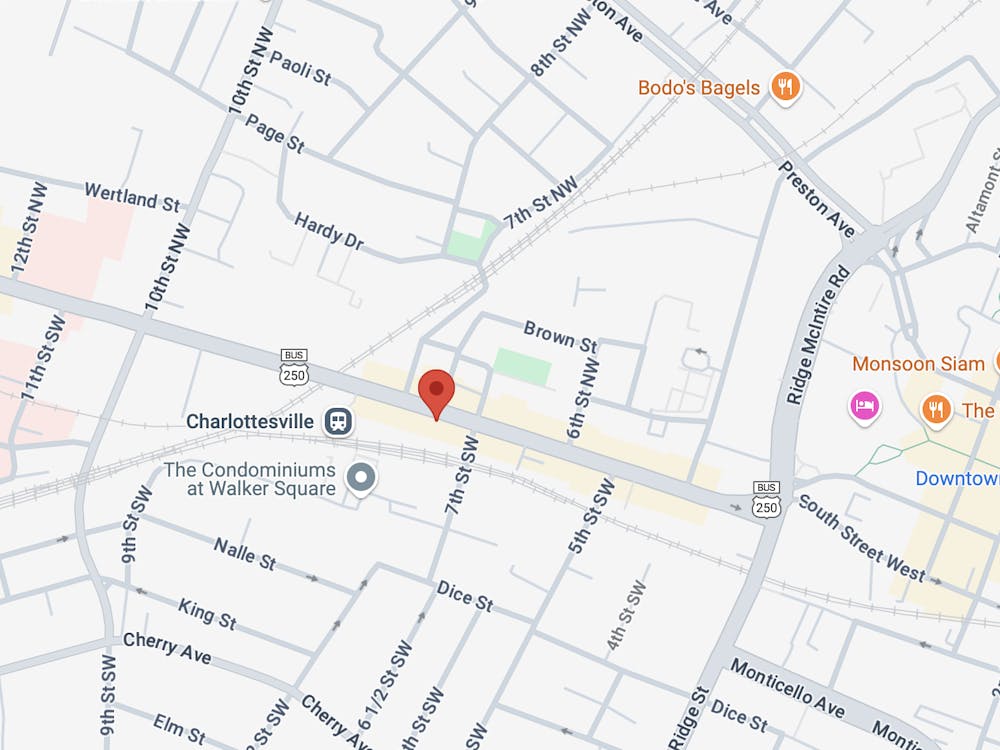As spring arrives on Grounds and students flock to the Lawn with picnic blankets, guitars and frisbees, graduate College student Santiago Pinto heads up the steps of the Rotunda carrying a less recognizable object — a Cyr wheel.
The acrobatic ring spans more than five feet in diameter — one might describe it as a giant hula hoop standing on its edge. But as Pinto steps inside the wheel, grips the rim with both hands and begins to spin, he makes it clear that the Cyr wheel is an apparatus unlike any other.
The improvised waltz consists of twirls, pirouettes and arcs. Pinto twists sideways and upside down, spinning like a coin as he keeps in time with the music from his speaker. The Cyr wheel pivots across the Rotunda’s exterior floor — a smooth but not too slippery surface that allows the Cyr wheel to move seamlessly.
“It's just dancing for me,” Pinto said. “Sometimes I'll play something slow to get passionate with it, and sometimes I get fast.”
But the Cyr wheel isn’t typically a one-man show. The act usually takes place beside aerial silks and the flying trapeze, among other gravity-defying spectacles. The Cyr wheel itself finds its roots in the contemporary circus, where acrobat Daniel Cyr first introduced it in 1996 as a derivative of the German wheel, a gymnastics apparatus made up of two hoops connected by horizontal crossbars.
While the German wheel is designed for rolling like a hamster, the Cyr wheel is designed for spinning like a top. Hundreds of acrobats teach and compete with the Cyr wheel, often recognized by their resemblance to Leonardo da Vinci’s “Vitruvian Man” while performing. The Cyr wheel’s popularity continues to rise in the circus industry, proving just how much a reinvented wheel can thrill audiences today.
The Cyr wheel is relatively unknown outside the circus sphere, but this fact doesn’t seem to bother Pinto, who performs with or without the presence of an audience. He described the link between the Cyr wheel and his home city — Bogotá, Colombia — where he first joined a circus and fell in love with acrobatics.
“The Cyr wheel [spoke] to me … the first time I saw it when I was a kid in the circus,” Pinto said. “I immediately went for it.”
Pinto said he became interested in acrobatics when he picked up parkour and gymnastics as a child. The possibility of performing professionally didn’t take shape for him until he met a peer who spoke about joining the circus. The two struck up a friendship and devised a plan to enroll in La Gata Cirko, a circus school in Bogotá. Entering a school of somersaults, trampolines and tumbling, Pinto discovered a world he could sum up in only one word — crazy.
“[La Gata] had some incredibly talented teachers,” Pinto said. “I started learning and meeting the community. I started performing with them.”
As he immersed himself in the circus community, Pinto deepened his fascination with acrobatics through Colombian culture. He said at Bogotá’s end-of-year festivals, he would push through throngs in the city square to catch La Gata’s performers doing handstands and flips on stage. While acrobatics are still underfunded in Bogotá, he said the parades always highlight the talent of the circus industry.
“This has always been kind of underground,” Pinto said. “La Gata struggled for a long time to get a good amount of funding … [but] lately I think La Gata has more appreciation — it's super huge during the end of the year.”
By college, Pinto was determined to pursue acrobatics in addition to his budding love for science. He enrolled in Illinois State University, where he simultaneously earned a bachelor's degree in physics and participated in the Gamma Phi Circus, the school’s performance troupe. There, at the oldest collegiate circus in the United States, Pinto began practicing the Cyr wheel in earnest.
He described the Cyr wheel as a creative outlet to balance out his scientific research. When he steps inside the Cyr wheel, he can forget about academics and simply lose himself in acrobatics. The two interests could not be more different, yet they meld perfectly in his mind, he said.
“It's kind of the two opposite parts of the brain, right? One goes into arts, and [the other goes into] science,” Pinto said. “They don't really match each other in any way besides that they're both part of my life.”
While Pinto conducts research in quantum computing at the University, he continues to perform the Cyr wheel around Grounds and on the streets in Downtown Charlottesville. He said he has not yet met fellow Cyr wheel performers at the University — he has, however, come across the Aerial Dance Club, a Contracted Independent Organization that specializes in acrobatic silks. Until he finds a larger on-Grounds acrobatics community, he keeps himself entertained with the twists and tricks of the Cyr wheel.
“At the beginning, when you're learning the technique, you just do tricks and tricks and tricks. Nowadays it’s more [about] flowing with it,” Pinto said.






